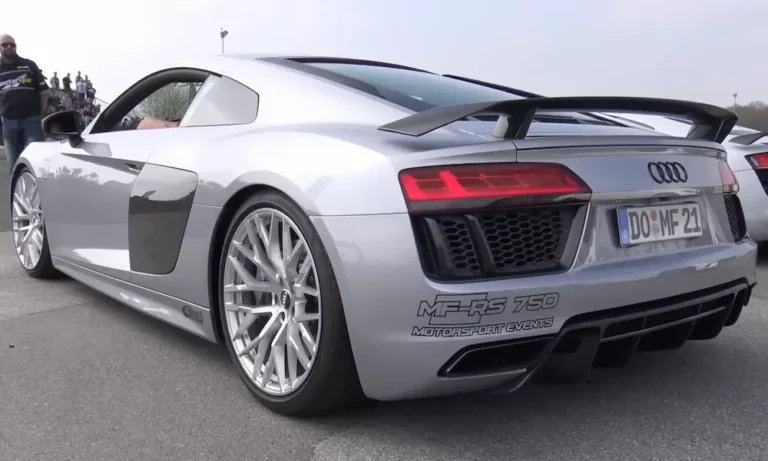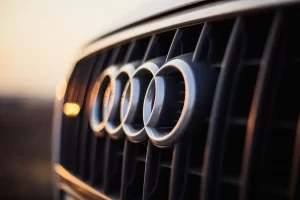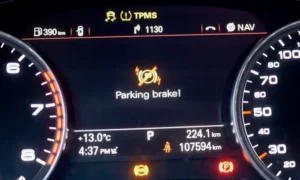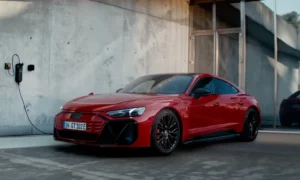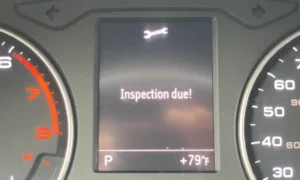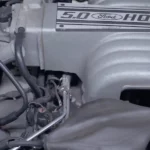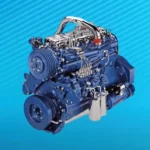Can’t decide between a daily driver and a race car? The Audi R8 V10 doesn’t make you choose. With an engine that purrs during your commute and roars on the track, it’s the Jekyll and Hyde of supercars—but with better fashion sense. Let’s dive into what makes this German powerplant so special.
The V10 Architecture: A Masterpiece of Engineering
The Audi R8’s beating heart is a naturally aspirated 5.2-liter V10 engine. Unlike many modern performance cars that have surrendered to turbocharging, Audi kept this gem naturally aspirated, giving you that immediate throttle response and a symphony of sound that turbos just can’t match.
This 5204cc masterpiece shares DNA with the Lamborghini Huracán, as both supercars are built on the Volkswagen Group’s Modular Sports System Platform. But don’t think this is just a badge-engineered engine—Audi’s engineers have given it a character all its own.
The V10 employs 40 valves in total (four per cylinder) with a Dual Overhead Camshaft (DOHC) configuration. This valve arrangement allows the engine to breathe freely at high RPMs, which is critical when you’re pushing toward that 8,250 RPM redline where peak power lives.
Power Figures That Demand Respect
The R8 V10 comes in several flavors, each more intoxicating than the last. After the 2018 facelift, Audi created a clear hierarchy of performance:
| Model Variant | Power Output | Max Torque | 0-60 Time |
|---|---|---|---|
| V10 quattro | 570 PS (562 hp) | 550 Nm | 3.5 seconds |
| V10 performance quattro | 620 PS (612 hp) | 580 Nm | 3.1 seconds |
| V10 RWD | 540 PS (533 hp) | 540 Nm | 3.7 seconds |
| V10 performance RWD | 570 PS (562 hp) | 550 Nm | 3.4 seconds |
The top-spec performance quattro model delivers its maximum power at a screaming 8,250 RPM, while peak torque arrives at 6,500 RPM. This high-revving character isn’t just about numbers—it creates an exhilarating driving experience you simply can’t get from turbocharged engines that run out of breath at the top end.
Direct Injection: Precision Fueling
The R8 V10 doesn’t just gulp fuel—it sips it with precision. Its Direct Injection fuel supply system sprays gasoline directly into the combustion chamber rather than the intake port.
This approach offers several advantages:
- More precise fuel metering
- Better combustion efficiency
- Improved throttle response
- Enhanced power delivery across the rev range
While fuel economy isn’t typically a supercar owner’s primary concern, the R8 manages a respectable 5.71 kmpl (ARAI rated). That’s not going to win any green awards, but it’s reasonable considering the performance on tap.
Cylinder on Demand: Smart Power
Here’s something surprising about this supercar engine: it can be efficient when it needs to be. The R8 features intelligent “cylinder-on-demand” technology that can deactivate one bank of cylinders during light driving.
By temporarily running as a 5-cylinder engine during cruising, the R8:
- Reduces fuel consumption
- Lowers emissions
- Lets you feel slightly less guilty about owning a supercar
Yet the moment you press the throttle, all ten cylinders spring back to life in milliseconds. It’s like having a conservative accountant and a wild party animal living in the same engine block.
Rear-Wheel Drive vs. Quattro Variants
Audi broke with tradition by offering rear-wheel drive variants of the R8 alongside their signature quattro all-wheel drive system. The RWD models sacrifice a bit of straight-line traction for a more purist driving experience.
The rear-wheel drive variants are about 50-65 kg lighter than their quattro counterparts, which gives them a slightly different character. With less weight up front and power going only to the rear wheels, these models offer:
- More traditional sports car handling
- Greater potential for controlled slides
- A more engaging experience for driving purists
- Slightly less straight-line acceleration
The first limited-edition R8 RWS (Rear Wheel Series) sold just 999 units worldwide, but its popularity convinced Audi to make rear-wheel drive a permanent part of the lineup with the R8 V10 RWD.
Transmission: No Clutch Pedal, No Problem
If you’re looking for a manual transmission in your R8, I have bad news. The second-generation R8 comes exclusively with a 7-speed S-Tronic dual-clutch transmission. But before you mourn the loss of the clutch pedal, consider what this gearbox offers:
- Lightning-fast shifts (faster than any human could manage)
- Seamless power delivery
- Perfect rev-matching on downshifts
- Multiple drive modes from comfortable to track-focused
The S-Tronic transmission is engineered to handle the V10’s substantial output while providing gear changes in milliseconds. In manual mode with the paddle shifters, you still get plenty of driver engagement without the left-leg workout of a traditional clutch.
All-Wheel Drive System: Quattro Evolved
In quattro variants, the V10’s power routes through one of the most sophisticated all-wheel drive systems on the market. The system is rear-biased, sending more power to the back wheels under normal conditions for sportier handling.
The quattro system incorporates:
- A water-cooled front differential for consistent performance
- A passive limited-slip rear differential for improved traction
- Variable torque distribution that can adjust power delivery in milliseconds
- Integration with the vehicle’s stability control systems
This intelligent power distribution helps the R8 put its substantial horsepower to the pavement efficiently. It’s particularly valuable in adverse weather conditions, giving the R8 year-round usability that some competitors can’t match.
Sound Engineering: The V10 Symphony
An engine isn’t just about numbers—it’s about experience. And few engines create an experience like the R8’s V10. Regarded as “one of the best sounding cars in its class,” the R8’s exhaust note has been carefully tuned to provide an auditory experience that matches its performance.
The naturally aspirated design contributes significantly to this soundtrack. Without turbochargers muffling the engine’s voice, you get:
- A clean, mechanical sound that builds linearly with RPM
- A distinctive howl at high revs that’s becoming increasingly rare
- Theatrical crackles and pops on downshifts
- Different character depending on which drive mode you’ve selected
Many owners cite the engine’s sound as one of the main reasons they chose the R8 over turbocharged competitors. In a world of increasingly synthesized engine notes, the R8 V10 remains refreshingly authentic.
Performance Metrics: The Numbers Game
The combination of the R8’s engine specifications and drivetrain engineering delivers impressive real-world performance:
| Performance Metric | V10 quattro | V10 Performance quattro |
|---|---|---|
| 0-60 mph | 3.5 seconds | 3.1 seconds |
| Top speed | 320 kmph (199 mph) | 330 kmph (205 mph) |
| Quarter mile | 11.5 seconds | 11.0 seconds |
| Power-to-weight | 357 hp/ton | 403 hp/ton |
These figures place the R8 firmly in supercar territory. What’s particularly impressive is that this performance doesn’t come at the expense of reliability or everyday usability—a hallmark of Audi engineering.
Evolution Through the Years
The R8’s V10 has evolved since its introduction, gaining power and efficiency with each update. The second-generation R8 (Type 4S) debuted at the 2015 Geneva Motor Show with two power levels, and Audi continues to refine the formula.
Key evolutionary highlights include:
- Initial release: 540 PS (base) and 610 PS (Plus)
- 2018 facelift: Power increased to 570 PS (quattro) and 620 PS (performance quattro)
- Introduction of permanent RWD variants after the success of the limited R8 RWS
- Improved engine electronics and performance mapping with each update
With each iteration, Audi has managed to extract more performance while maintaining the character that makes this engine special.
Comparison with Competitors
How does the R8’s V10 stack up against rivals? Let’s see:
| Model | Engine | Power | Character |
|---|---|---|---|
| Audi R8 V10 | 5.2L NA V10 | Up to 620 PS | High-revving, linear power |
| Porsche 911 Turbo S | 3.8L Twin-Turbo H6 | 650 PS | Immediate torque, turbocharged delivery |
| McLaren 570S | 3.8L Twin-Turbo V8 | 570 PS | Mid-range punch, technical feel |
| Ferrari F8 Tributo | 3.9L Twin-Turbo V8 | 720 PS | Explosive power, Italian drama |
The R8’s naturally aspirated engine gives it a distinct character in this turbocharged era. While it may not match the peak torque figures of some competitors, its linear power delivery and soundtrack provide a different kind of thrill.
The Emotional Appeal of Natural Aspiration
In an age where most manufacturers have embraced turbocharging, the R8’s naturally aspirated V10 has become something of a unicorn. This rarity gives it an emotional appeal that transcends spec sheets.
The naturally aspirated design provides:
- Immediate throttle response without turbo lag
- A linear power curve that builds progressively
- A more connected feeling between driver input and engine response
- That intoxicating sound that can’t be replicated with forced induction
These qualities have helped the R8 maintain its desirability even as newer, more powerful competitors have emerged.
The Future: Last of a Dying Breed?
As the automotive industry marches toward electrification, the R8’s naturally aspirated V10 represents one of the last of its kind. Audi has already experimented with electric propulsion in the limited-production R8 e-tron, and future generations are likely to feature some form of hybridization or full electrification.
This transition makes the current R8 V10 even more special—it’s a celebration of internal combustion at its finest before regulations and technology push the industry in new directions. For enthusiasts, this could be the last chance to experience a high-revving, naturally aspirated supercar from a mainstream manufacturer.

